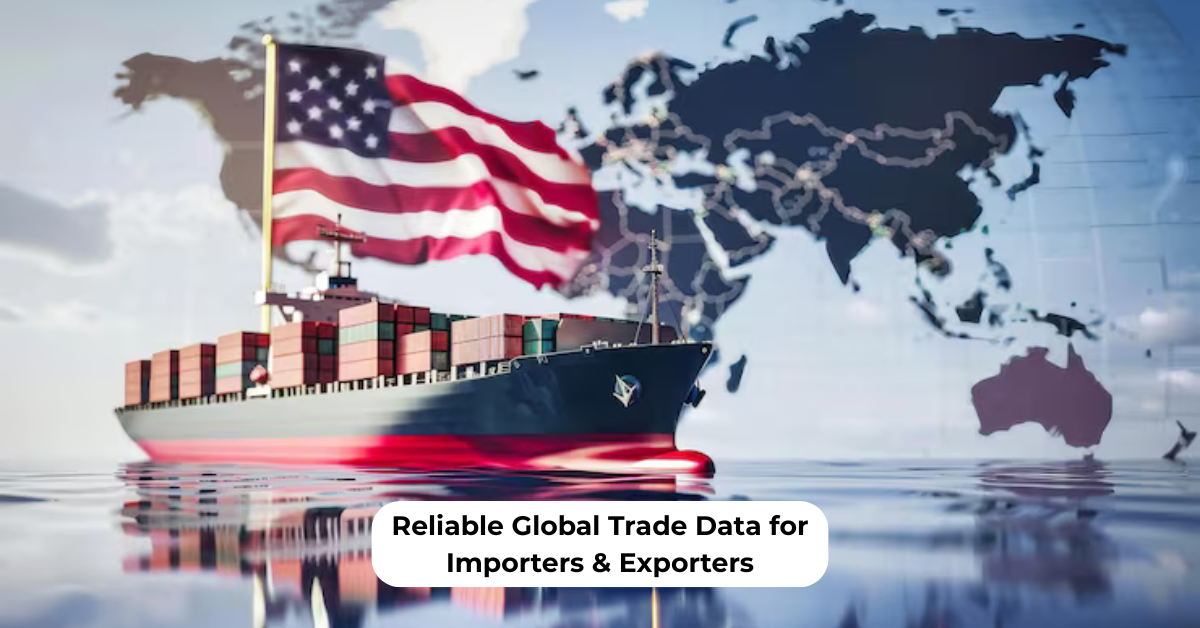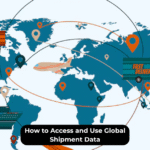Unlocking the Hidden Power of Global Trade Insights
In the hyper-competitive global economy today, information is not merely a competitive edge—it is a lifeline. Every company, from a small startup discovering its first overseas partner to a multinational firm charting intricate supply chains, relies on data-based strategies to survive. And driving these strategies is a potent tool: US import export data. With the power to dissect trade flows, supplier trends, and market requirements, companies are able to leapfrog ahead of their rivals with accuracy.
One of the world’s largest traders, the United States, holds a treasure trove of knowledge that is waiting to be unlocked by organizations. You could be in retail, manufacturing, technology, or wholesale distribution. It no longer matters if you use this data or not—its use is now mandatory. The question is not “why” but “how.” How can using U.S. import and export data change the way you make decisions? How do patterns obscured in US trade statistics unlock new possibilities?
This article discusses six revolutionary ways in which companies can use US import export data by country, by company, and even year to build a competitive advantage in international markets.
1. Identifying Emerging Markets Through Trade Patterns
All successful expansion starts with an understanding. By examining U.S. trade figures by country, companies can see where demand for given products is increasing or decreasing. This not only allows exporters to know where heavily importing regions are but points out areas of untapped potential in less competitive markets. US import export data
For instance, looking at the US import export data by country can show an influx of electronic components imported from Asia while reporting more exports of food products to Latin America. A company can move fast, allocating resources to regions with rising demand and staying away from areas where demand is falling.
It’s not guesswork. It’s strategy based on fact-based insights derived from U.S. trade data.
2. Analyzing Competitor Movements with Customs Information
Competition is keen, and companies tend to spend lavishly to track competitor moves. But much of this information is in plain sight. With the application of U.S. customs import data by company, firms can monitor competitors’ supply chains, determine their sourcing partners, and even estimate their trading levels. US import export data
Visualize having an idea of which foreign suppliers your rivals are dependent upon or finding out the volume of their shipments from one year to another. That information enables you to gauge their weaknesses, search for alternative suppliers, and develop strategies to beat them. The capacity to decipher U.S. import data by country and company equips decision-makers with hard evidence rather than guesses.
3. Enhancing Supply Chain Resilience
Geopolitical stress, pandemics, and natural disasters can destroy even the strongest business if they disrupt supply chains. With U.S. trade data by country and industry segments, businesses can diversify sourcing plans, mitigate risks, and maintain continuity.
For instance, companies with only one supplier from a given region can find secondary suppliers from other nations by analyzing U.S. imports and exports statistics. By examining US import export statistics by year, firms can appreciate seasonal patterns, forecast blockages, and prepare pre-eminent backup sourcing strategies ahead of time. US import export data
The outcome is resilience—a performance buffer against unforeseen outside shocks.
4. Tracking Industry Trends Over Time
Markets don’t transform overnight; they develop through subtle movement that compounds year after year. Companies that track US import export data by year develop the power to monitor this movement with stunning accuracy. It could be the growth of renewable energy components, the fall of coal exports, or shifts in textile imports, long-term data offers a window to the direction of international commerce.
This macro view enables businesses to foresee demand cycles, forecast investments, and position themselves before industry shifts. With U.S. trade data, businesses don’t respond—they forecast and prepare.
5. Evaluating Opportunities for New Partnerships
Trade is relationship-based, and data puts the spotlight on who the players are. By searching U.S. customs import data by company, companies can find possible distributors, suppliers, or buyers within their products and objectives.
For example, a mid-size manufacturing company in the Midwest is able to examine U.S. import and export data to identify international counterparts who are actively seeking equivalent products. US import export data Being able to identify these opportunities saves time spent on blind outreach and speeds up meaningful business relationships.
Relationships built on tough data are founded on firmer ground and bring more value over the long term.
6. Gaining Cost Advantages and Negotiation Power
Price is usually the make-or-break consideration when it comes to securing contracts. Businesses with access to US trade data can compare supplier price trends in several nations, evaluate market means, and negotiate better. With questions such as “where can I obtain US import data for free?”, even small enterprises have access to essential information previously limited to big business. US import export data
For example, if U.S. import statistics by country indicate that a particular component can be obtained more economically from one region than another, the companies can base their evidence on this to negotiate better deals. This shifts negotiations from dependency to authority.
Conclusion: Turning Data into Business Growth
The six strategies detailed here highlight one irrefutable fact—American trade data is much more than digits on a spreadsheet. It is a blueprint to growth, a means of risk management, and an impetus to competitiveness.
– Pinpoint new markets with accuracy.
– Monitor competitors with precision.
– Sustain supply chains with foresight.
– Foresee trends with long-term perspective.
– Form partnerships with confidence.
– Negotiate smarter with data-driven leverage.
With information ruling the day and survival determined by it, deciphering US import export data by company, by country, and by year is no longer a matter of choice—because it’s revolutionary. Those companies who seize on these findings now will dominate the industries of the future, converting raw trade information into strategic might and long-term growth.
FAQs: US Import Export Data
Q1. What are the top US export items?
The US mainly exports machinery, electrical equipment, vehicles, aircraft, agricultural products, and refined petroleum.
Q2. What are the main imports of the US?
Top US imports include electronics, machinery, vehicles, pharmaceuticals, and crude oil.
Q3. Where can I access US import export data?
You can access it from official sources like the US Census Bureau, International Trade Administration (ITA), and private global trade database providers.
Q4. Why is US trade data important for businesses?
It helps exporters and importers identify demand, explore new markets, and compete effectively by tracking trade patterns.
Q5. Is US import export data updated regularly?
Yes, government and private providers update it monthly or quarterly, depending on the source.



